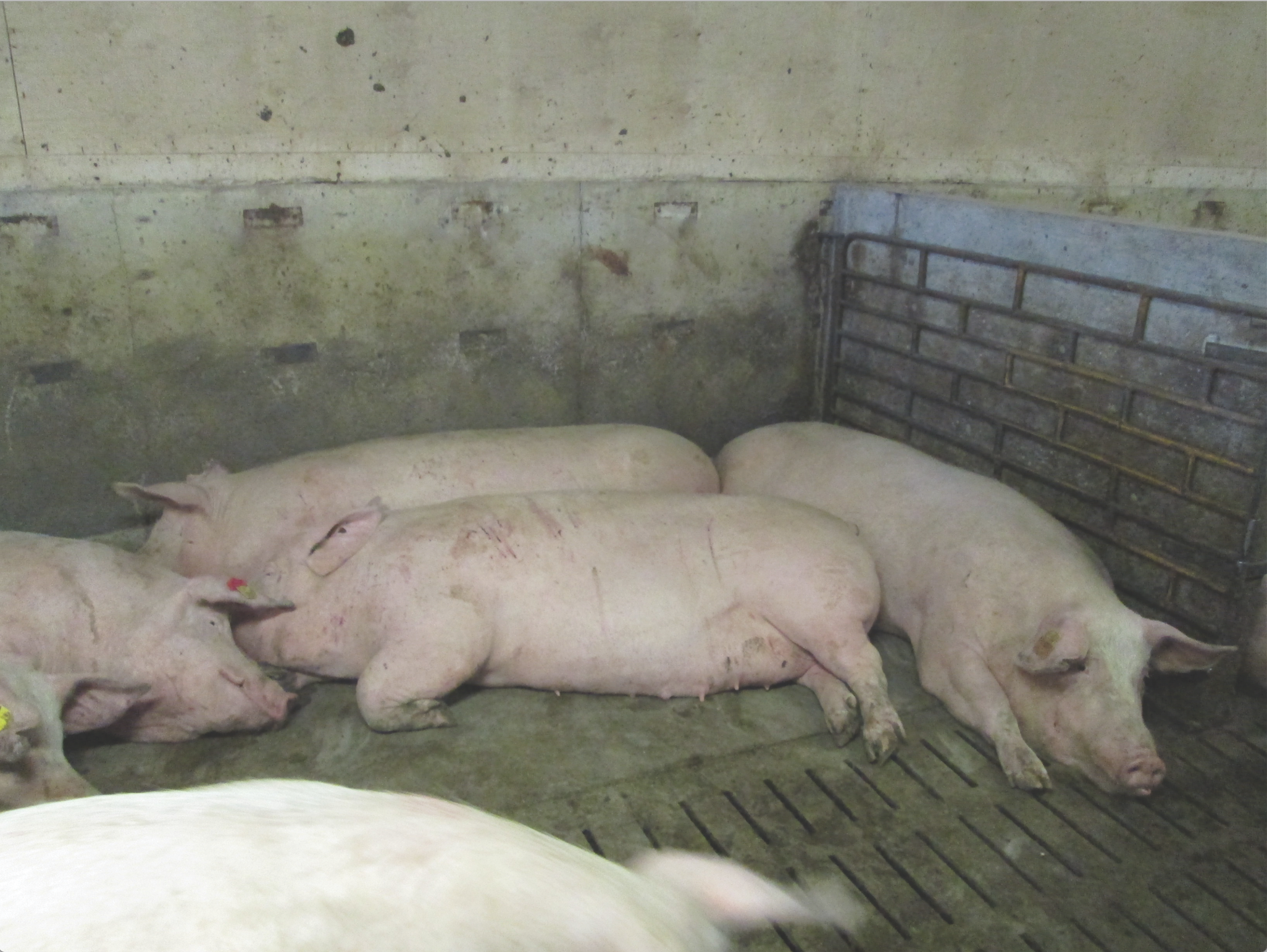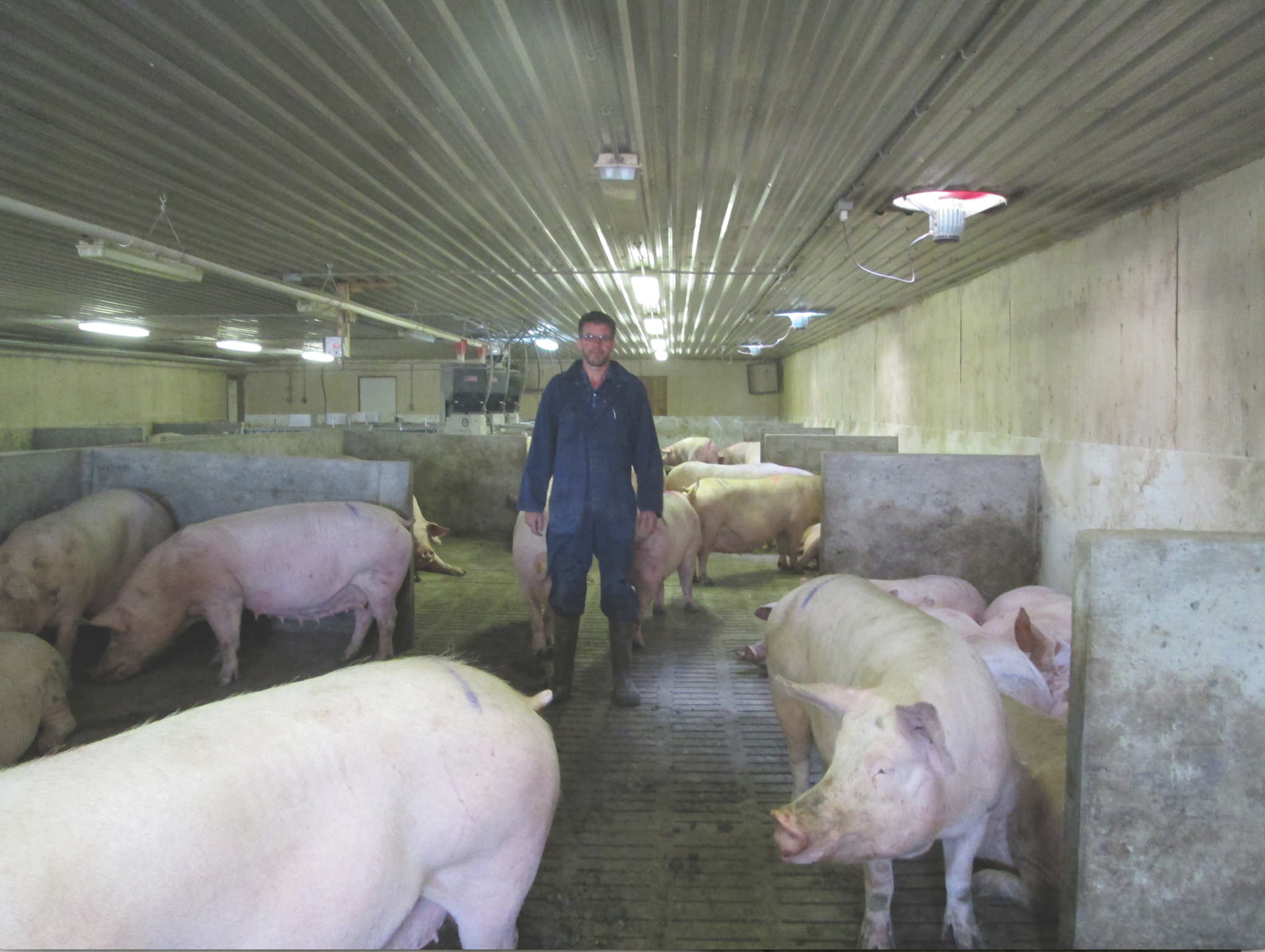Less feed wasted, less work, fewer stillborns and healthier sows are among the advantages being reported by Canadian producers who have made the switch to group housing in their sow barns.
Earlier this year, researchers from the Saskatoon-based Prairie Swine Centre offered discussion on making the transition during meetings with producers throughout the western provinces.
During the Red Deer meeting late in March, Horst Farm Ltd. operator Wim Van Wijk spoke about his decision to depopulate and renovate his sow barn, located west of Lacombe.
Van Wijk said he needed to clean out the barn because of a health issue within the herd, so the timing was right for him to dismantle the gestation stalls and develop a group housing system.
The timing also worked out well from an economic perspective, says PSC ethologist Jennifer Brown.
“He was able to get back into production in time to capture some of those increased pork prices,” Brown said during a telephone interview with Prairie Hog Country.
Brown is part of a PSC team that is collaborating with the University of Manitoba on the National Sow Housing Conversion Project, funded by members of the Canadian Pork Council through its Swine Innovation Porc program.
While the move to a new system can be quite complex, Brown says producers need to start by answering one key question: “Do I renovate or do I rebuild?”
Deciding whether to move to a loose housing system was taken out of Canadian producers’ hands with the adaption in 2014 of updates to the Code of Practice for the Care and Handling of Pigs. The updated codes require producers who have been using gestation stalls to convert to group housing when they renovate existing barns or build new.
“Technically, the Code is saying if you’re not doing any renovations, you could stay in stalls into the foreseeable future,” said Brown.
“After 2024, you would have to start giving them some option for increased exercise. I don’t think that’s a very practical option – giving sows exercise if they’re in stalls. So, basically, (the deadline) is July 1, 2024.”
Producers planning their conversion need to look at the condition of their buildings first to decide whether they’re worth the investment, says Brown.
They must then decide which feeding system would be most suitable for their operation, since that is the system that will dictate how the rooms are set up.
Competitive feeding, where feed is dumped on the floor or in shortened stalls, is less costly up front and can work well in smaller groups, says Brown. However, a competitive system requires closer management to ensure that less aggressive sows are getting their share and are not being bullied by larger, more aggressive pen mates.
“You have to have someone actually observing the pens when the pigs are being fed, making sure everybody is up and actually getting feed,” she said.
“You’re not controlling individual sow feeding, so generally we see that the feed costs are going to be higher because usually you’re compensating for those bigger sows getting more than enough feed and adding a little extra feed to make sure your less competitive sows are actually getting the feed that they need.”
Non-competitive systems that use electronic self-feeders are more costly to install, but offer considerable savings on feed costs and labour, says Brown. Electronic self-feeding enables producers to individually manage feed intake for individual sows, matching each animal’s diet according to its desired body condition and stage in the breeding cycle.
ESF enables producers to allow groups of 300 sows, with one feeder for every 50 animals – 10 animals less than the manufacturers’ specifications, says Brown. Placing sows in one large room saves space by eliminating alleys and hallways while offering sufficient backup in case a feeder fails, she added.
Key considerations in such a system include putting solid floors in a lounging area and narrowing the slat space in the rest of the room. Researchers have determined 20 mm to be the optimum space between slats to prevent lameness, says Brown.
Issues of aggression among sows in large groups have been largely overblown by people who resist change, she says.
Studies performed by fellow researcher Harold Gonyou have shown that aggression drops off in larger groups because aggressive sows are not willing to expend the energy required to establish and maintain dominance.
“Because it’s a non-competitive feeding system, every sow is getting their feed and there’s very little for them to compete over, other than preferred lying areas, so there is reduced stress,” said Brown.
“(It is) very easy to work with sows in these large groups, because they do become very calm and very passive. They’re getting more exercise and they form their social groups. Some producers are saying it’s easier to preg check than in stalls, because in stalls you’re having to reach around and between penning and sows, whereas in the groups they can just walk around in the pen and go up to each sow and pre check them.
“One (producer’s) comment was that moving sows from gestation to farrowing is easier. The sows are more fit and calmer.”
The improved muscular and bone strength that result from getting more exercise have also provided benefits at farrowing, with fewer stillborns and a shorter interval between pigs, says Brown.
While the initial costs of renovation or rebuilding can be “daunting,” a number of resources are being made available to help producers with their decisions, she says.
Resources include a new website – groupsowhousing.com – now being developed by Manitoba Pork. The site should be up and running this summer. Prairie Swine Centre has also developed a tool that can help producers analyze their own barns to see how different systems and room designs would work and what they would cost.
Brown says the phasing in of the new requirements should avoid the problems that developed in Europe, where a firm deadline was established and has now passed. Many producers waited until the last minute, and then failed to properly plan and execute their conversions.
An agronomist from Michigan has determined that production losses will exceed renovation costs if a renovation is not properly planned, says Brown.
“Our advice is to consider it very carefully and think about how you want to renovate. •
— By PHC Staff






